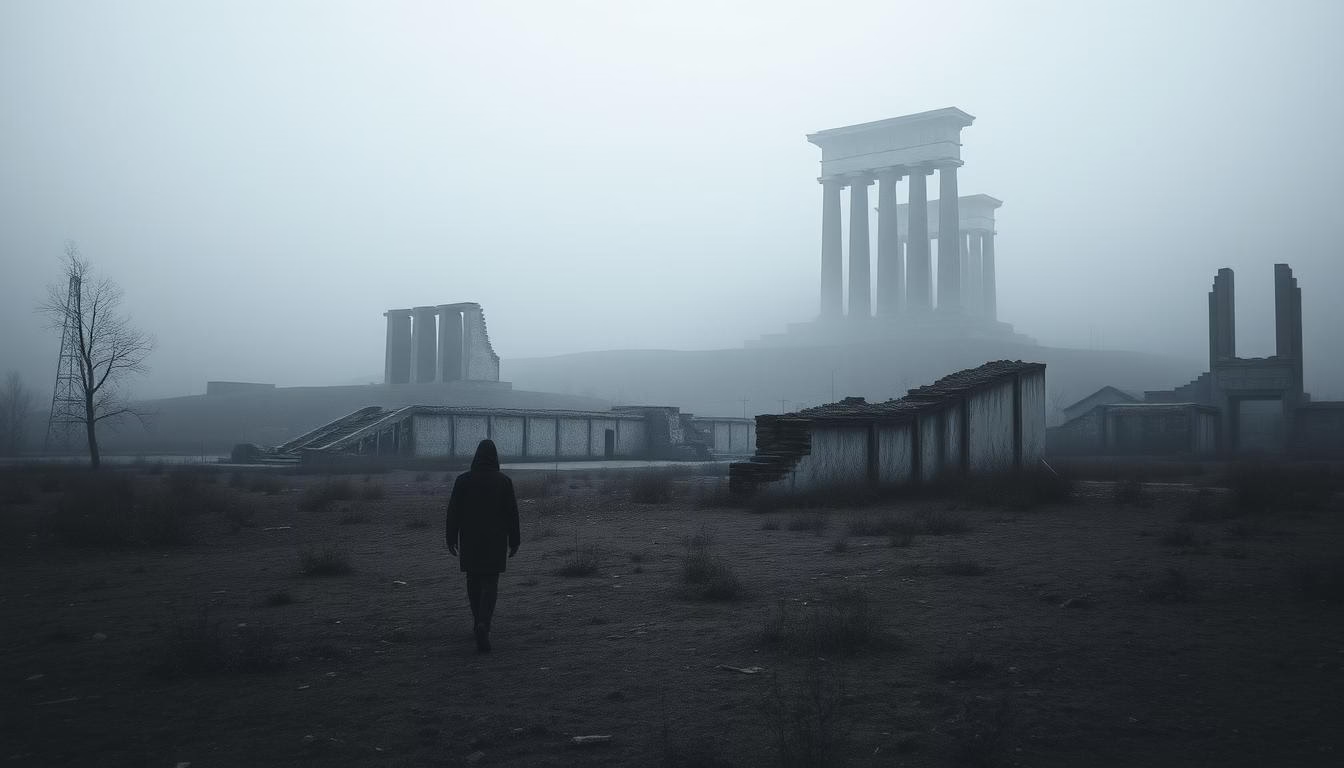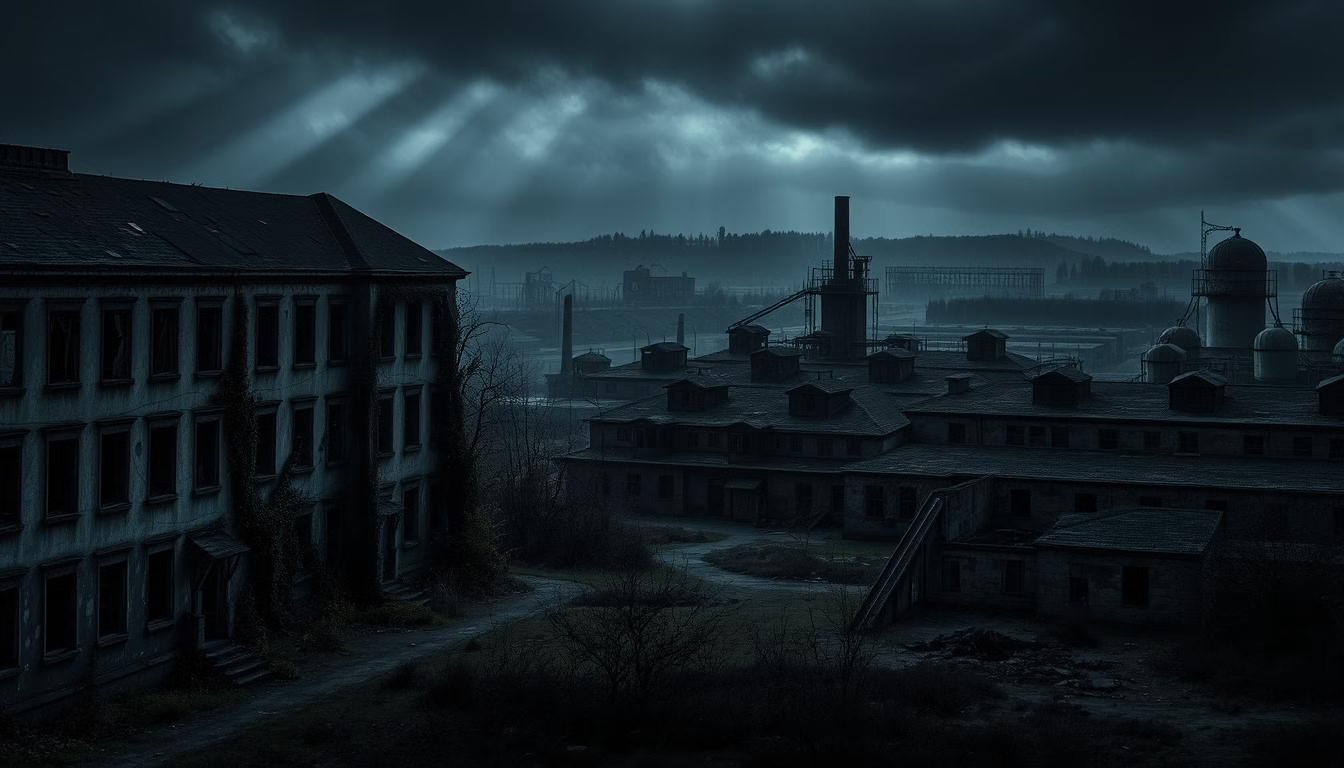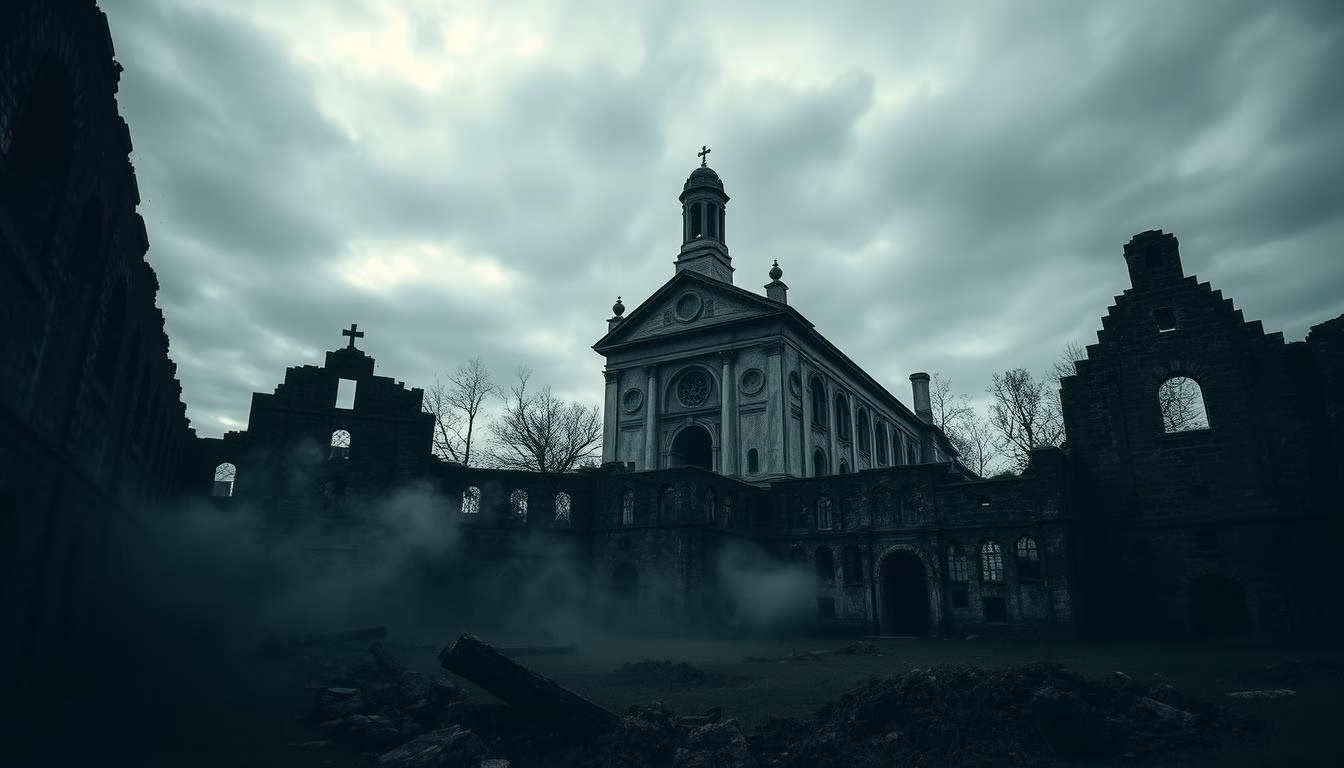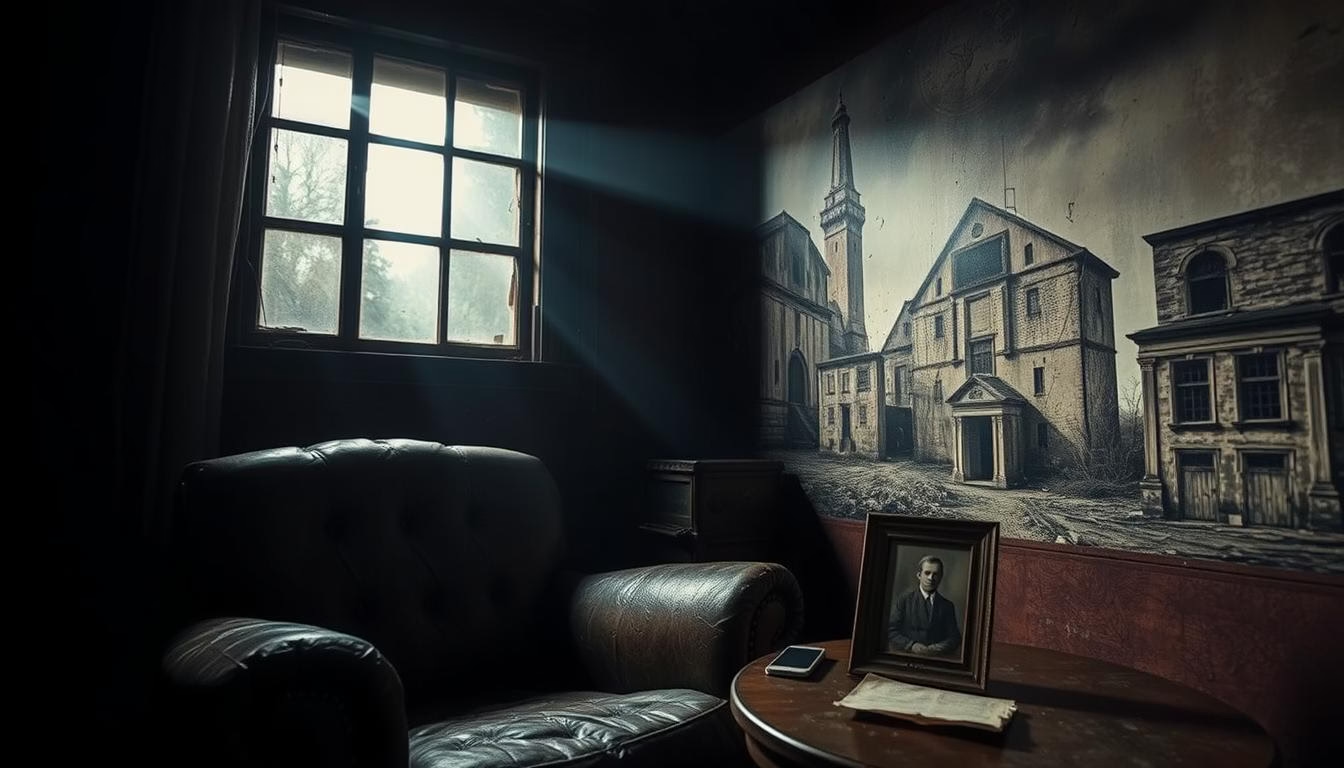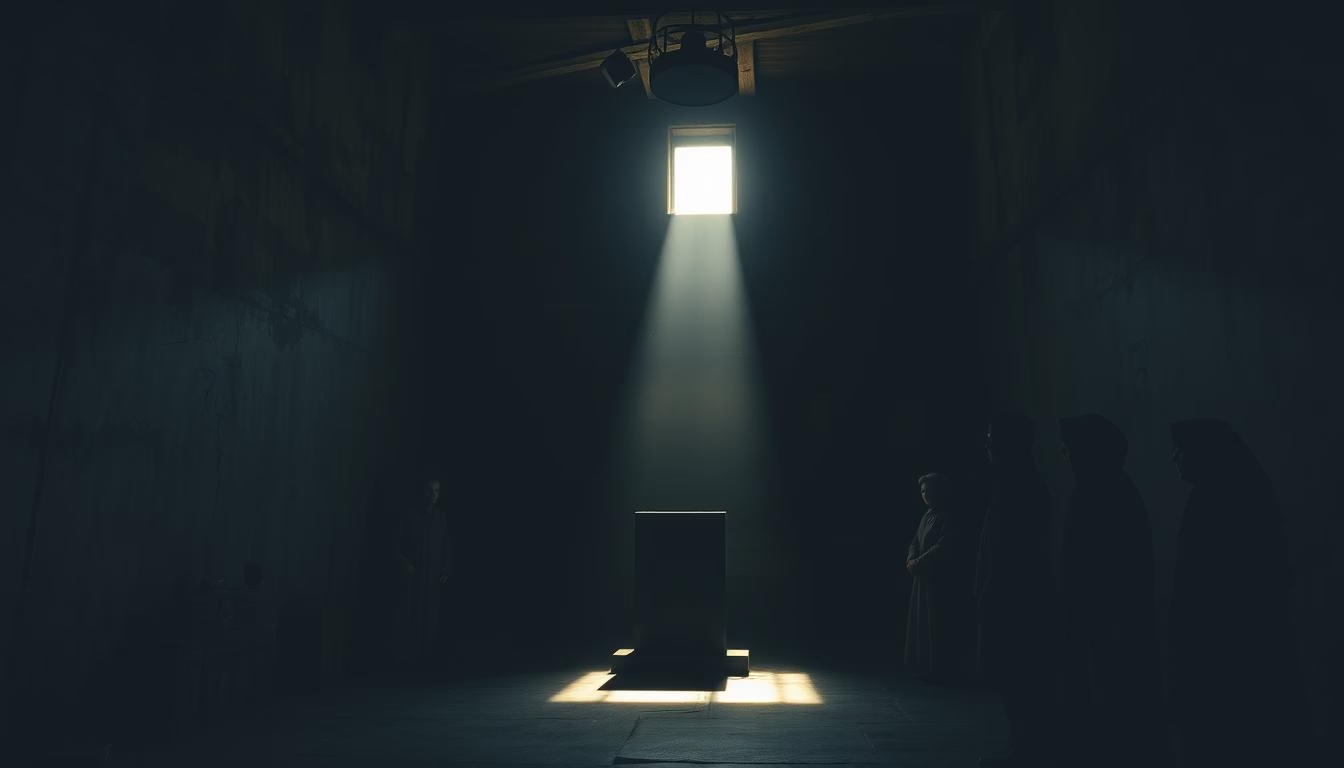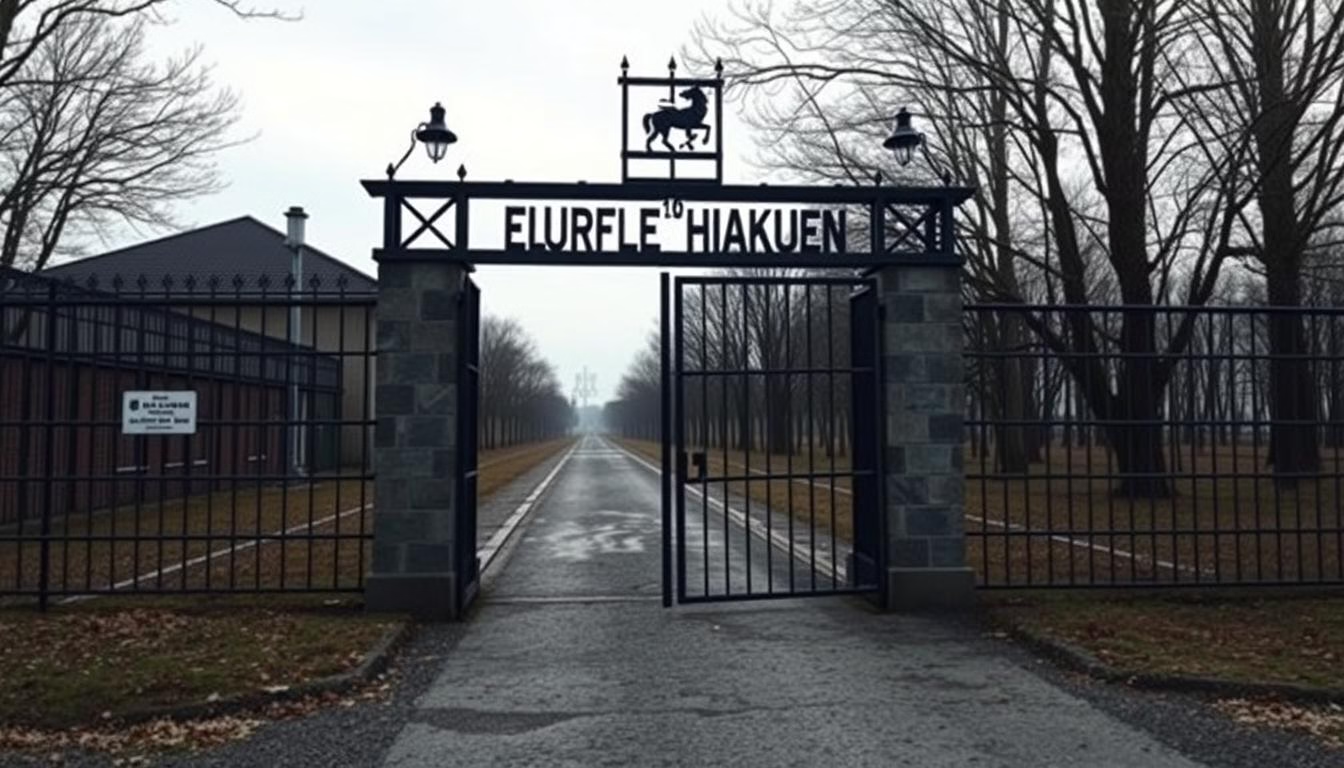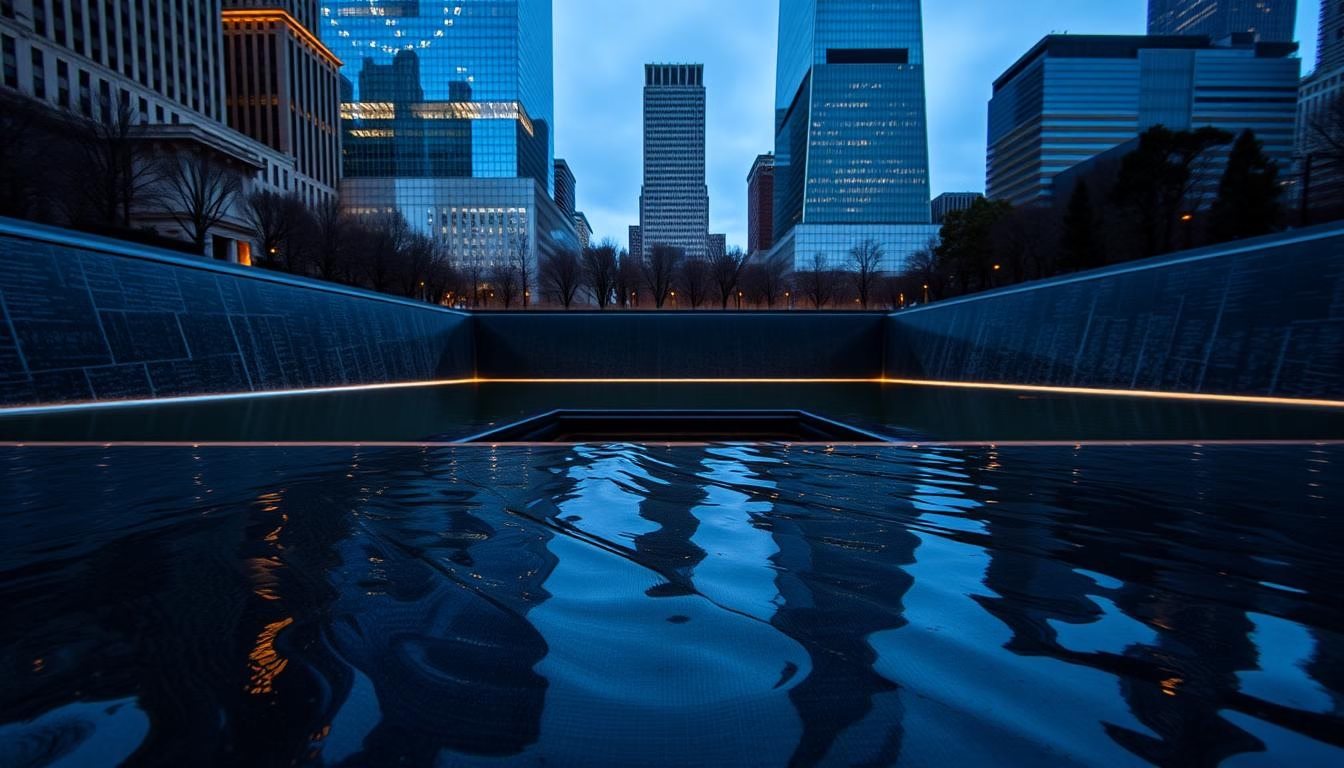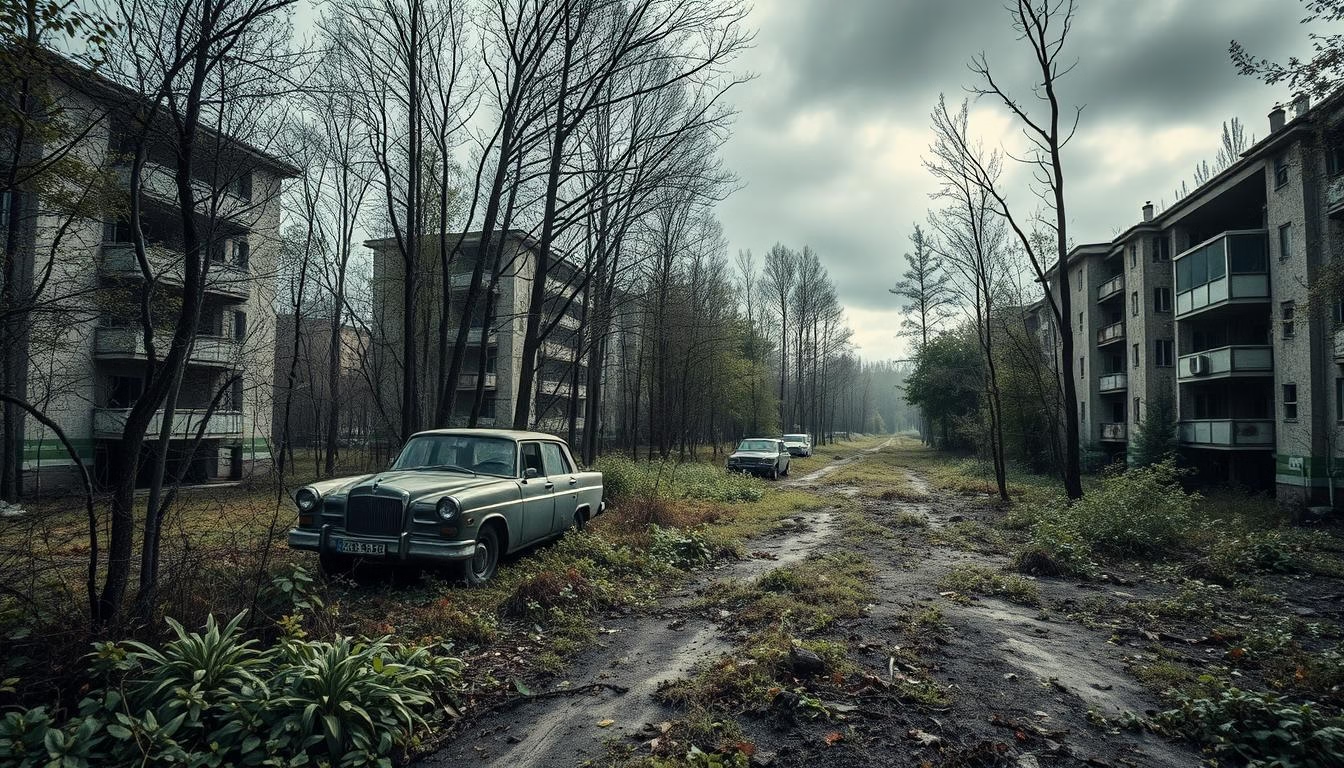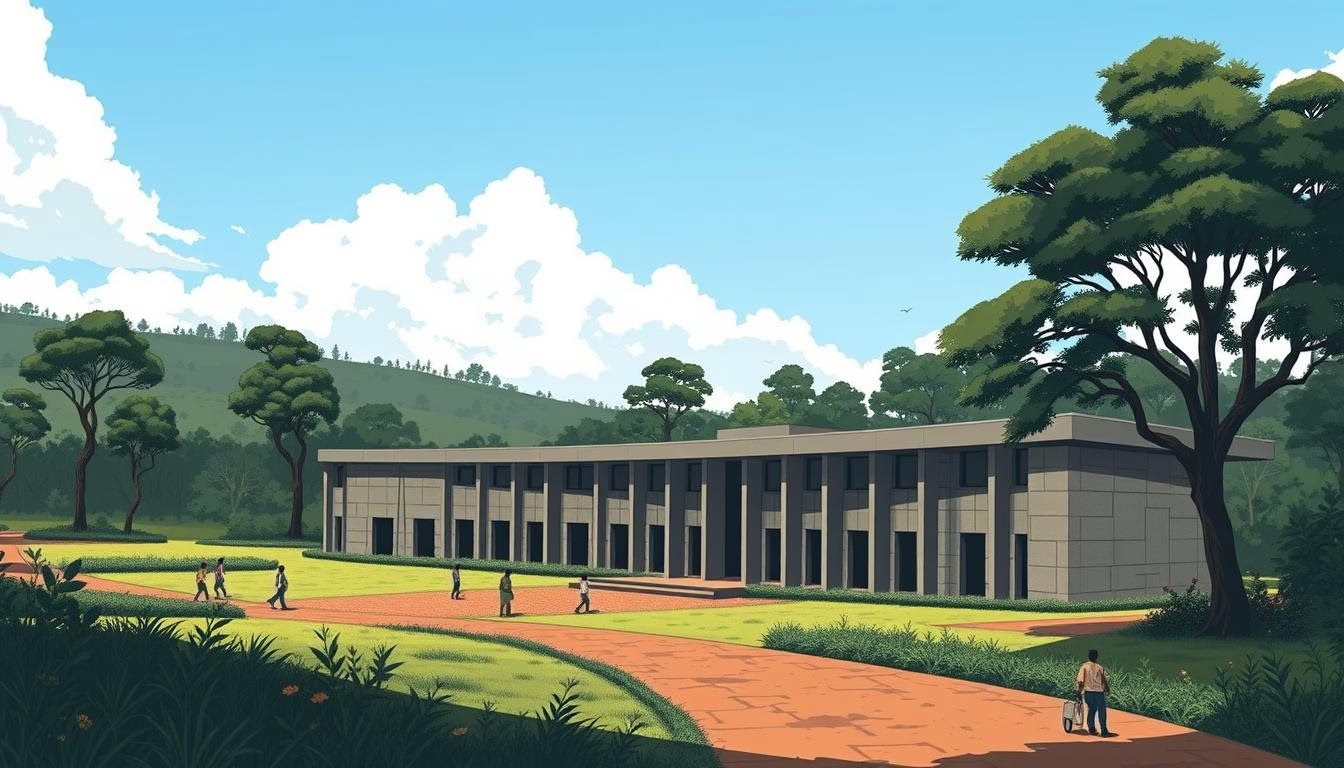Have you ever wondered what draws people to places associated with tragedy and death? Is it morbid curiosity, or is there something more profound at play?
Visiting sites of historical significance, such as concentration camps or disaster zones, has become an increasingly popular form of travel, often referred to as dark tourism. This phenomenon raises complex questions about respect, exploitation, and the human experience.
Understanding the appeal and ethics of these destinations is crucial for responsible travel. In this guide, we’ll explore the history, significance, and must-see sites of dark tourism, helping you navigate this complex and fascinating world.
What Is Dark Tourism?
Dark tourism, a phenomenon that has garnered significant attention in recent years, involves traveling to places associated with death, tragedy, or suffering. This form of tourism has sparked both fascination and debate among travelers, historians, and ethicists alike.
Definition and Concept
Dark tourism encompasses a wide range of sites and experiences, from ancient locations like the Roman Colosseum to more modern disaster sites such as Chernobyl. It includes genocide memorials, concentration camps, areas affected by natural disasters, prisons, battlefields, and places associated with famous deaths. The concept of dark tourism is multifaceted, involving various categories such as thanatourism, grief tourism, disaster tourism, and heritage tourism.
Types of Dark Tourism Experiences
Dark tourism experiences can be categorized into several distinct types. These include:
- Thanatourism, which focuses on death and the supernatural.
- Grief tourism, centered on collective mourning and remembrance.
- Disaster tourism, involving visits to sites of natural or human-made catastrophes.
- Heritage tourism, which explores difficult historical sites and events.
- Battlefield tourism, taking visitors to sites of historic conflicts.
Each of these categories offers a unique way to engage with and understand the history and impact of tragic events, making dark tourism a complex and multifaceted aspect of the tourism industry.
The Historical Roots of Dark Tourism
Dark tourism, a phenomenon where tourists visit sites associated with death and tragedy, has a rich historical background. The practice of visiting places of historical significance, especially those related to suffering and loss, has been a part of human culture for centuries.
Early Examples from Ancient Rome to the 18th Century
In ancient times, people would visit gladiatorial contests and public executions, which can be seen as early forms of dark tourism. The Romans, for instance, would travel to witness these events, showcasing an early form of morbid curiosity. As civilizations evolved, so did the nature of dark tourism. By the 18th and 19th centuries, people were visiting sites like the execution sites in England, further cementing the practice.
| Period | Examples of Dark Tourism |
|---|---|
| Ancient Rome | Gladiatorial contests, public executions |
| 18th-19th Century | Execution sites in England |
| 20th Century | Concentration camps, JFK assassination site |
Evolution into Modern Dark Tourism
The term ‘dark tourism‘ was coined in the 1990s, specifically in 1996, by two academics in Glasgow studying sites related to JFK’s assassination. Modern dark tourism has evolved to include more educational and commemorative elements. The travel industry has adapted to this demand, making previously inaccessible sites available to a wider audience.
Today, tourism related to historical tragedies and death continues to grow, driven by increased accessibility and awareness. The tourist industry now offers a range of experiences that cater to this interest, from guided tours to memorials and museums.
The Psychology Behind Dark Tourism
The psychology behind dark tourism is multifaceted, involving a range of motivations from morbid curiosity to a desire for historical understanding. This form of tourism attracts individuals for various reasons, often centered around the emotional and educational experiences it provides.
Understanding the Appeal
People are drawn to sites of tragedy and disaster due to a complex mix of factors. For some, it’s about understanding the human condition in the face of adversity. As Peter Hohenhaus, a seasoned dark tourist, recounts his visit to Treblinka, highlighting the powerful stories that linger long after the visit.
Educational and Emotional Impact
Visiting dark tourism sites can have a profound emotional and educational impact. These sites offer more than just a historical account; they provide a tangible connection to the past. The experience is often described as moving and memorable.
| Impact | Description |
|---|---|
| Educational | Provides a deeper understanding of historical events through physical presence and firsthand accounts. |
| Emotional | Fosters empathy by connecting visitors emotionally to the suffering of others, promoting compassion and humanitarian values. |
By engaging with these sites, visitors can gain a more nuanced understanding of history, fostering a more empathetic and informed perspective. This aligns with the broader appeal of dark tourism, which continues to attract individuals seeking meaningful experiences.
Ethical Considerations in Dark Tourism
Dark tourism, by its very nature, challenges visitors to consider the fine line between respectful remembrance and exploitative voyeurism. As this form of tourism gains popularity, it’s crucial to examine the ethical implications of visiting sites associated with tragedy and death.
Respecting Tragedy vs. Exploitation
The aftermath of tragedies often sees a surge in visitors, some of whom may be accused of exploiting the suffering of others for personal gratification. For instance, following the Grenfell Tower fire in London, some individuals arrived at the site to take selfies, prompting community members to protest with signs that read, “Grenfell: A Tragedy Not A Tourist Attraction.”
| Ethical Issue | Description | Visitor Responsibility |
|---|---|---|
| Photography Policies | Varying rules across sites regarding photos | Understand and respect site-specific photography rules |
| Commercialization of Souvenirs | Commodification of tragedy through souvenirs | Avoid purchasing exploitative souvenirs |
| Cultural Sensitivity | Differences in mourning practices and attitudes toward death | Research local customs before visiting |
The Selfie Debate and Appropriate Behavior
The rise of social media has created new ethical challenges for dark tourism, with inappropriate selfies at tragedy sites becoming particularly controversial. Visitors must be mindful of their behavior at these places, maintaining solemnity and avoiding actions that trivialize suffering. Understanding and respecting local customs and boundaries is essential.
By being aware of these ethical considerations, visitors can contribute to a more respectful and meaningful experience at sites of tragedy, balancing personal education with sensitivity toward the victims and their families.
Must-Visit Dark Tourism Sites Around the World
From sites of genocide to areas of catastrophic disasters, dark tourism encompasses a wide range of locations worldwide. These sites not only attract visitors due to their historical significance but also serve as places for reflection and education on the darker aspects of human history.
Auschwitz-Birkenau, Poland
The Auschwitz-Birkenau memorial and museum is a poignant reminder of the atrocities committed during World War II. Visitors can explore the preserved barracks, gas chambers, and personal belongings of the victims, gaining a deeper understanding of the horrors of the Holocaust.
9/11 Memorial and Museum, New York
Located in the heart of New York City, the 9/11 Memorial and Museum commemorates the lives lost during the 2001 terrorist attacks. The memorial features two large reflecting pools surrounded by the names of the victims, while the museum houses artifacts and stories from that day.
Chernobyl Exclusion Zone, Ukraine
The Chernobyl Exclusion Zone offers a haunting glimpse into the consequences of nuclear disaster. Visitors can tour the abandoned city of Pripyat and the damaged reactor, witnessing firsthand the impact of one of the world’s most significant nuclear accidents.
Genocide Memorials in Rwanda
Rwanda’s genocide memorials document the horrific 1994 genocide that claimed approximately 800,000 to 1 million lives. The Kigali Genocide Memorial serves as the primary site for education and remembrance, featuring preserved mass graves and displays of victims’ personal effects.
These sites, among others, play a crucial role in educating visitors about the consequences of hatred, violence, and genocide, promoting a message of peace and tolerance. As dark tourism continues to grow, it’s essential to approach these locations with respect and sensitivity.
Controversial Dark Tourism Destinations
The world of dark tourism is filled with destinations that spark debate among travelers and locals alike. While some sites are widely accepted as places of remembrance and education, others raise significant ethical concerns.
North Korea Tours
North Korea guided tours represent a highly controversial aspect of dark tourism. Travelers are drawn to the country’s secretive nature and the opportunity to glimpse life in a heavily controlled environment. However, these tours often involve tightly controlled itineraries and a lack of transparency about the true nature of the experiences being offered.
Tourists must consider the ethical implications of supporting the regime through tourism dollars.
Recent Disaster Sites and Ethical Timing
Visiting sites of recent disasters is another contentious issue within dark tourism. Places like Fukushima in Japan and the areas affected by the 2004 tsunami in Southeast Asia have grappled with the transition from recovery zones to memorial tourism sites.
The question remains as to when it becomes appropriate to visit such sites, with no clear consensus on the waiting period. Local communities are often divided, with some seeing economic benefits and others feeling their trauma is exploited.
Some destinations have adopted “recovery tourism” models, incorporating tourism into rebuilding efforts and encouraging visitors to participate in volunteer work or support local businesses.
How to Approach Dark Tourism Responsibly
Responsible dark tourism is about more than just visiting somber sites; it’s about doing so with respect and sensitivity. As travelers, we have the power to make a positive impact on the communities we visit.
Research Before You Visit
Before visiting any dark tourism site, it’s essential to research the history and significance of the location. Understanding the context and story behind the site enhances your experience and fosters respect for the victims and their families.
Respectful Behavior and Photography
Being mindful of your behavior and photography practices is crucial. Avoid taking inappropriate or disrespectful photos, and be aware of any rules or restrictions in place at the site. Consider the feelings of those affected by the tragedy when taking pictures or interacting with the environment.
Supporting Local Communities
Supporting local communities is a vital aspect of responsible dark tourism. By choosing locally-owned accommodations, restaurants, and tour companies, you ensure that your tourism dollars benefit the community directly. This approach not only boosts the local economy but also helps preserve the historical integrity of the site.
| Aspect | Responsible Practice | Benefit |
|---|---|---|
| Research | Understand the site’s history | Enhanced experience and respect |
| Behavior | Be mindful of actions and photography | Respect for victims and their families |
| Community Support | Choose local businesses | Economic boost and preservation |
By adopting these practices, travelers can contribute to a more ethical and respectful form of tourism that benefits both the visitor and the local community.
The Future of Dark Tourism in a Digital Age
As technology advances, the way we engage with dark tourism is changing dramatically. The digital age has enabled new forms of interaction with dark tourism sites, making them more accessible to a wider audience.
Social Media’s Impact on Dark Tourism
Social media platforms have become crucial in promoting dark tourism destinations. They provide a space for sharing experiences and creating a community around these sites. However, this increased visibility also raises questions about the ethics of sharing tragic events.
The impact of social media on dark tourism is multifaceted, influencing both how we visit and how we perceive these sites.
Virtual Dark Tourism Experiences
Virtual reality and 3D modeling technologies are creating immersive virtual experiences of dark tourism sites. This technology makes it possible for people to visit these sites remotely, overcoming barriers such as distance or disability.
Additionally, digital preservation efforts are documenting these sites in detail, creating archives that will last even if the physical locations deteriorate. This not only enhances the experience but also ensures that the history is preserved for future generations.
The future of dark tourism lies in balancing technological innovation with respect for the sites and their histories. As we move forward, it’s crucial to consider the implications of these digital advancements on the tourism industry as a whole.
Conclusion: Balancing Education, Remembrance, and Respect
Ultimately, the value of dark tourism lies in its ability to educate and foster empathy. When approached thoughtfully, it serves important purposes in education, commemoration, and understanding human suffering. Successful destinations balance historical accuracy with respect for victims, creating reflective spaces. As interest grows, both site managers and visitors must ensure these experiences remain educational and respectful. By doing so, people can connect with our shared human history, confront difficult truths, and develop greater compassion across cultural divides, making tourism a meaningful experience.
Also Explore

